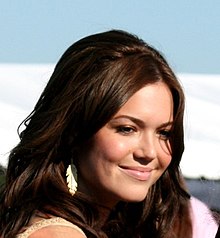Piano Sheets > Mandy Moore Sheet Music > Cry (ver. 2) Piano Sheet
Cry (ver. 2) by Mandy Moore - Piano Sheets and Free Sheet Music

About the Song
Other avaliable versions of this music sheet: Version 1 Version 2
"Cry" (2002) is the third song released by Mandy Moore from her third self-titled album Mandy Moore. The song tells the story of a girl who first thought her lover to be insensitive, until one day she saw him cry. "You were all by yourself, staring up at the dark gray sky, I was changed..." The song wasn't a major hit in America but was an MTV favorite and did well overseas. The song was also on the A Walk to Remember soundtrack in 2002. It also debuted a brunette Moore. Moore felt that "Cry" would be perfect for the soundtrack since it would be released around the time of the movie. It is also one of Moore's favorite songs of the album. Amanda Leigh Mandy Moore (born April 10; 1984) is an American pop singer; songwriter; actress; and fashion designer. She grew up in Florida and came to fame as a teenager in the early 2000s; after the release of her teen-oriented pop albums So Real; I Wanna Be.
Download this sheet!
About the Artist

Random article
The essentials of piano sheet music Most people have the notion that sheet music is a very complicated notation and reading it very difficult. However, this is not true as understanding sheet music piano is just a matter of transcribing the various musical notes written.
Uses of sheet music
Piano sheet music is nothing but piano notes written in standard notations. You can avail such free sheet music online from various websites. The main use of sheet music piano is to help aspiring musicians recreate the same sequence of notes as performed by the composer of the piece. It is a method where a specific musical composition is recorded in written form using music notes. The ultimate aim of reading sheet music is to recreate the same score in as accurate a manner as is possible.
(More...)
